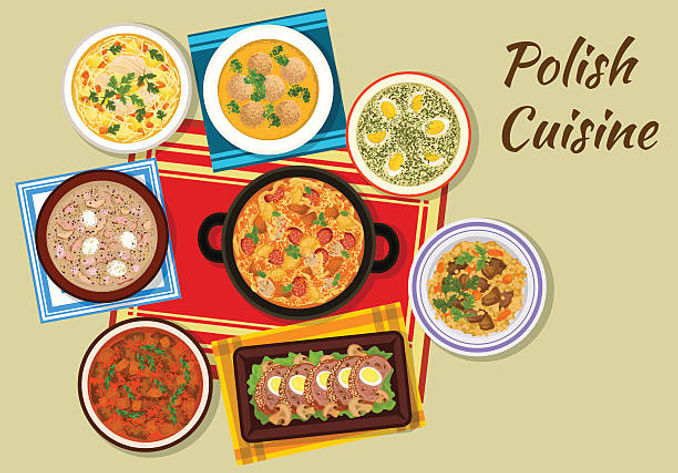
By Taste




Polish cusine from the Middle Ages to the 19th century
The Polish cuisine in the Middle Ages was based on dishes made of agricultural produce (millet, rye, wheat), meats of wild and farm animals and fruits, herbs and local spices. It was known above all from abundant salt using and permanent presence of groats. A high calorific value of dishes and drinking the beer as a basic drink (unlike the wine spread in south and west Europe) was typical of Middle Ages Polish cuisine.

A beer and a mead were most popular drink for a lot of time, but with time an expensive wine, imported mainly from Silesia and Hungary appeared.

Medieval chronicles describe Polish cuisine as very pungent, using large amounts of the meat and groats. Indeed, medieval Polish cuisine applied prodigious seasonings amounts (when compared with other countries of Europe), mainly pepper, nutmeg and juniper. Thanks to close trade relations between Poland and countries of the Orient, prices of spices were lower in Poland than in many other countries. Up to today's times mentions of aromatic, dense and very spicy Polish sauces behaved ('jucha szara' and 'jucha czerwona', nowadays unknown). Apart from that balm, the turnip and pea were common. What's interesting in the Middle Ages a flatware wasn't used at all.
The oldestwritten sources
Compendium Ferculorum albo zebranie potraw' by Stanislav Czerniecki is the oldest Polish cookbook. The book dates from 1682. Only a century later in 1786 a next great work of this type was published – oeuvre of Wojciech Wieladko 'Excellent Cook' ('Kucharz doskonaly' in original), a book unusually popular and repeatedly resumed. What's interesting reprints of this book are also available in Poland nowadays – but rather as the certain curiosity or position for fiends. The oldest written sources


Staropolska cuisine - the oldest and most traditional - specializes in meat and cereal dishes (dumplings, cereal, dumplings), flax products (mushrooms, fruits, herbs), pork (including cold cooked meat and sausages), freshwater fish, pastries cakes, desserts, alcohols and fruit liqueurs. A typical feature of Polish cuisine is the variety of soups and local vegetables, fruits, cereals and meat products.


Seasonings typical of Polish food are horseradish, dill, juniper, pepper, cream, cheese. Among the fruits and vegetables: beets, cucumbers, cabbage, apples, cherries, berries, gooseberries and other Central European are typical, and in the past also wild plants such as sorrel, young green beet, dandelion or nettles. Very rich vegetables, which can be stored in winter, play a big role (peas, broad beans, kohlrabi or turnips). Sometimes in the winter the food was enriched with nuts and acorns were grown. Typical fruits of the Polish cuisine are apples and fruit of the forest, as well as plums, pears, cherries, unknown in the cherry of northern Europe, gooseberries and currants. Poles use these fruits until today in dishes, desserts, pastries, fruit liqueurs, as well as compote, concrete and canned food.

